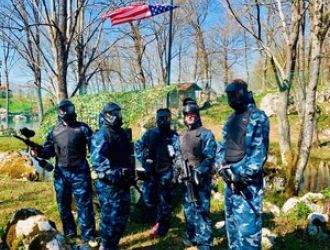An educational trail of the Lika landscape and heritage
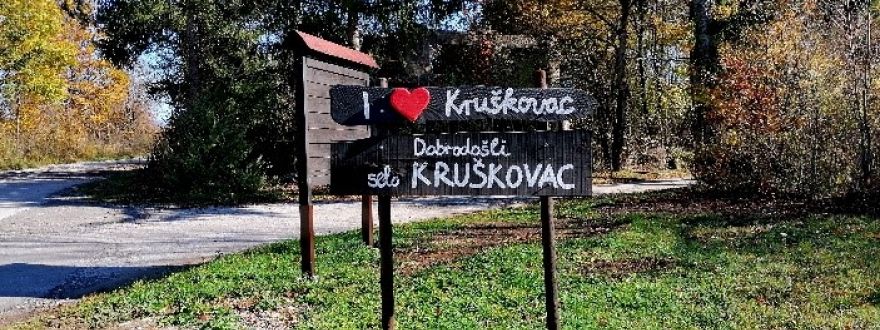
Sport and outdoor - An educational trail of the Lika landscape and heritage
- Kruškovac, 53000, Gospić
- udrugazir@gmail.com
- web
EDUCATIONAL TRAIL Kruškovac - Zir
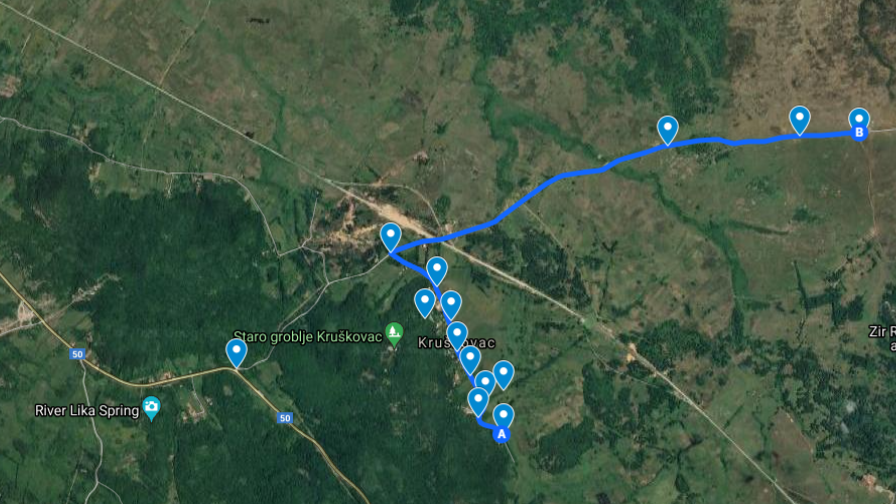
Panel 1 - Info panel
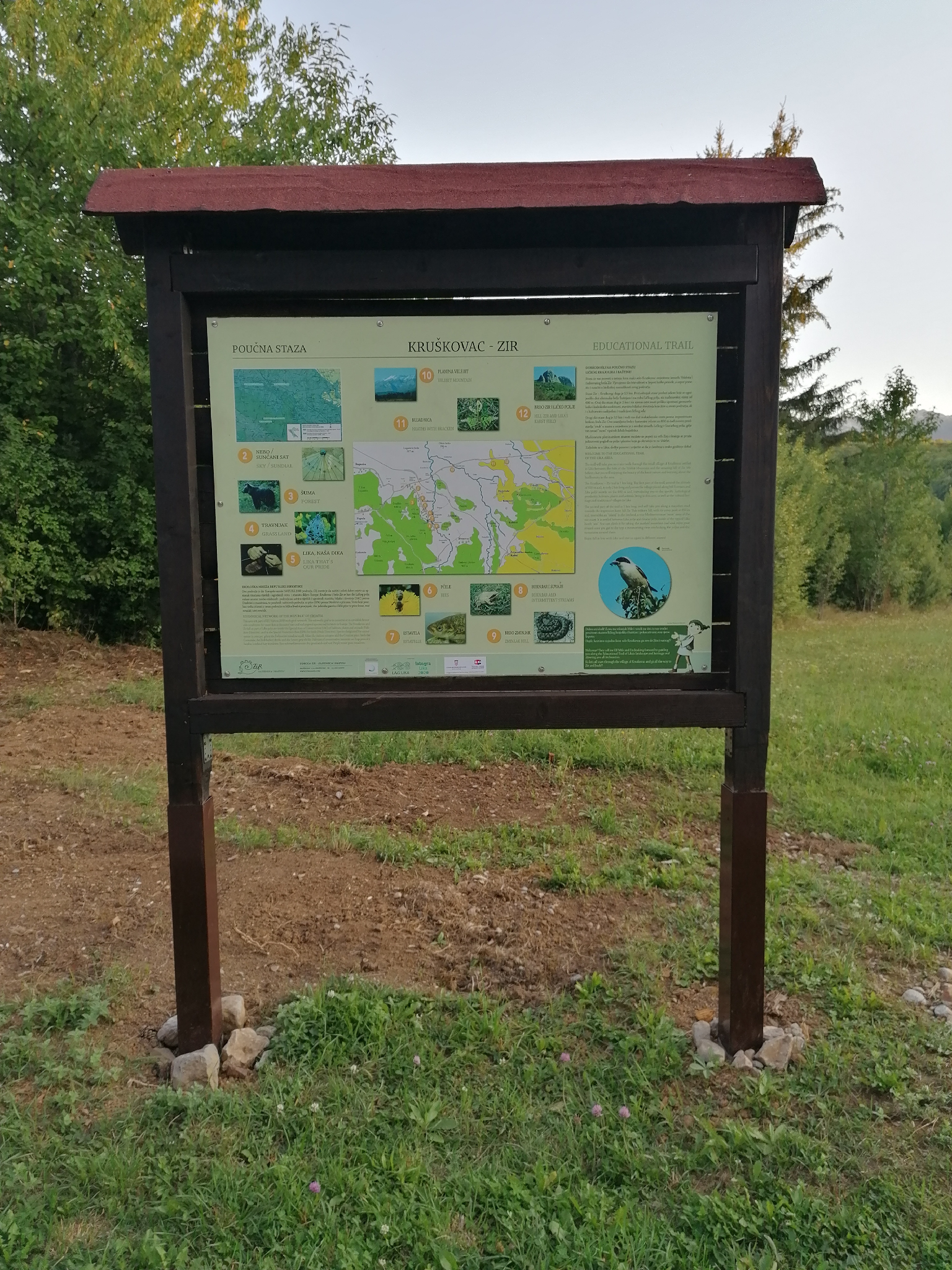
Welcome to the educational trail of the Lika area.
The trail will take you on a nice walk through the small village of Kruškovac settled in Lika between the foot of the Velebit Mountain and the amazing hill of Zir. We believe that you will enjoying the beauty of the karst nature and learning about the biodiversity in the area.
The Kruškovac – Zir trail is 7 km long. The first part of the trail, around the altitude of 600 m a.s.l., is only 2 km long and passes the village placed along hill Šušnjara and Lika polje mostly on the 600 m a.s.l., introducing you to the specific hydrological pecularity, habitats, plants and animals living to this area, as well as the cultural heritage and tradition of villages in Lika.
The second part of the trail is 5 km long, and will take you along a macadam road towards the impressive karst hill Zir. This solitary hill, with its stony peak at 850 m a.s.l., resembles an “island” in the lowland, a true Mediterranenan “oasis” away of the sea coast. It is settled between Lika polje and Gračac polje, inside of the typical Lika heath “sea”. You can climb it by taking the marked mountain trail and enjoy your reward once you get to the top; a mesmerising view overlooking the poljes and the mountains around them.
Enjoy, fall in love with Lika and visit us again in different season!
Ecological Network of the Republic of Croatia, part of the Eurpean NATURA 2000 area
This area is a part of EU Natura 2000 ecological network. The network's goal is to conserve or re-establish favourable conditions for more than a thousand rare and endangered species and habitats in Europe. The Kruškovac and Zir hill as part of Lika polje are inside the Special Area of Conservation (SAC) of habitats, plants and animals (Habitats Directive), and in the Special Protection Area (SPA) for birds (Birds Directive). The Šušnjara hill as part of the Velebit Mounatin has protected forest habitats and the same bird species as the SPA area of Lika polje.
Species designated for conservation in area are: plant the Dalmatian meadow squill, fishes the Jadova minnow and the Croatian pijor, birds the Corncrake, the Red-backed shrike and the Lesser grey shrike. Habitats of conservation interests are European dry heaths, Lowland hay meadows, East-submediterranean dry grasslands and wet purple moor grass meadows.
Panel 2 - Sky, Space
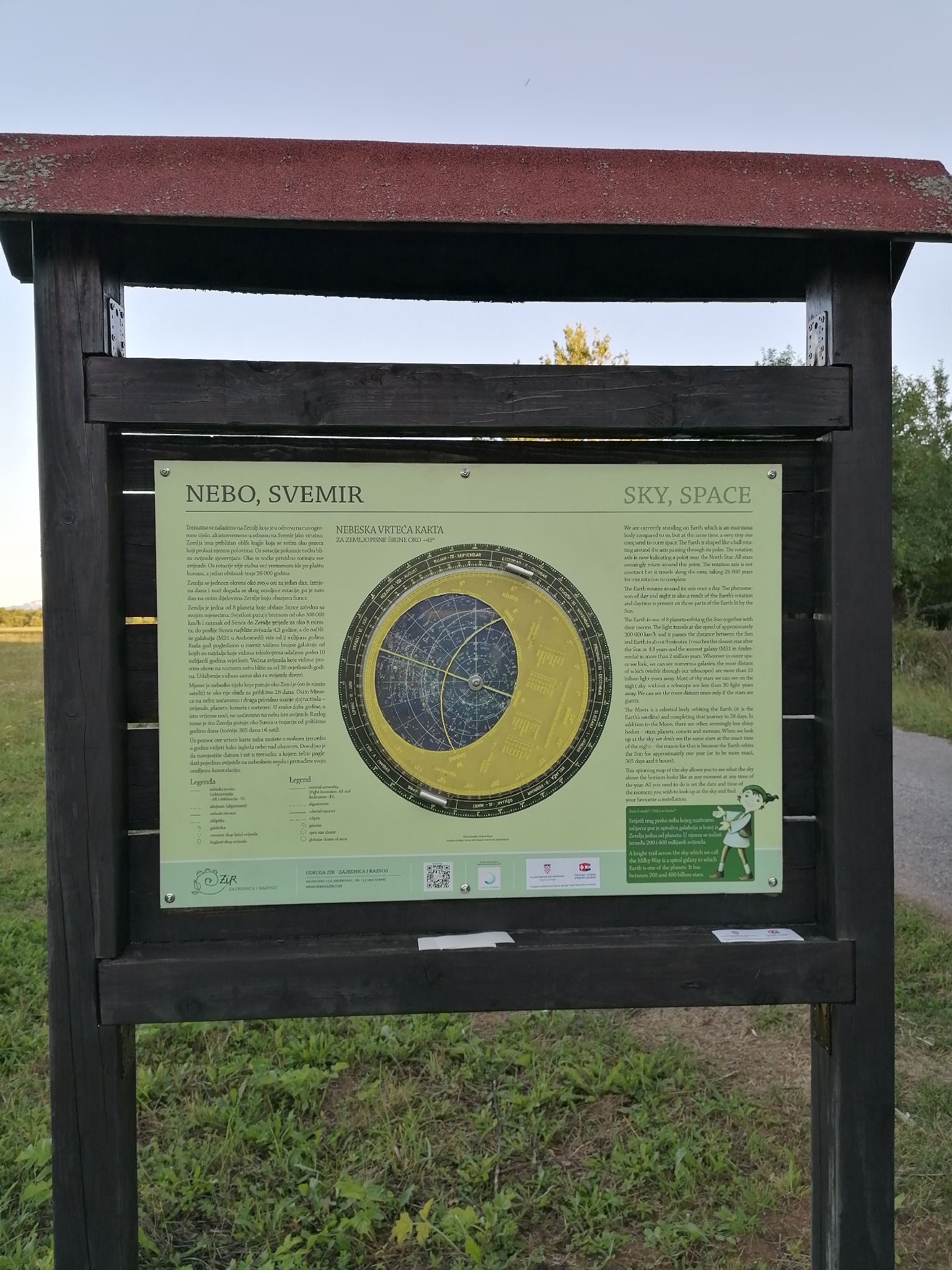
Sky, Space We are currently standing on Earth which is an enormous body compared to us, but at the same time, a very tiny one compared to outer space. The Earth is shaped like a ball rotating around the axis passing through its poles. The rotation axis is now indicating a point near the North Star. All stars seemingly rotate around this point. The rotation axis is not constant but it travels along the cone, taking 26 000 years for one rotation to complete.
The Earth rotates around its axis once a day. The phenomenon of day and night is also a result of the Earth's rotation and daytime is present on those parts of the Earth lit by the Sun.
The Earth is one of 8 planets orbiting the Sun together with their moons. The light travels at the speed of approximately 300 000 km/h and it passes the distance between the Sun and Earth in about 8 minutes. It reaches the closest star after the Sun in 4.3 years and the nearest galaxy (M31 in Andromeda) in more than 2 million years. Wherever in outer space we look, we can see numerous galaxies, the most distant of which (visible through our telescopes) are more than 10 billion light years away. Most of the stars we can see on the night sky without a telescope are less than 30 light years away. We can see the more distant ones only if the stars are giants.
The Moon is a celestial body orbiting the Earth (it is the Earth's satellite) and completing that journey in 28 days. In addition to the Moon, there are other, seemingly less shiny bodies – stars, planets, comets and meteors. When we look up at the sky, we don't see the same stars at the exact time of the night – the reason for that is because the Earth orbits the Sun for approximately one year (or to be more exact, 365 days and 6 hours).
This spinning map of the sky allows you to see what the sky above the horizon looks like at any moment at any time of the year. All you need to do is set the date and time of the moment you wish to look up at the sky and find your favourite constellation.
Panel 3 - Grasslands
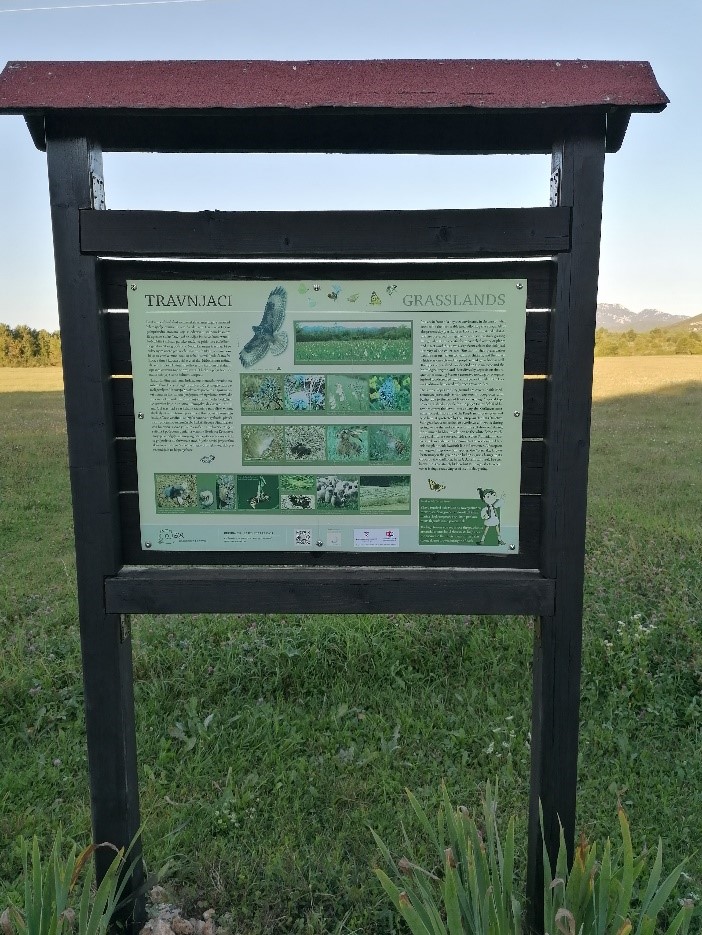
You are in front of a hay meadow located in the area of what used to be the best arable land adjoining the village. All of the present-day grasslands in Lika are semi-natural habitats and are preserved by regular mowing or livestock grazing. The grasslands are specific for their rich diversity of plants and insects and thus have a significant role in the biological diversity of the entire area. The lack of their preservation would soon turn them to heaths or thickets, and the forest which was once cleared by people would grow back as well. The types of grasslands are depending on the soil type and the hydrological regime, and their diversity depends on the frequency of mowing because extensive mowing or overgrazing lead to a decreased number of species. Grasslands in Lika are traditionally mowed only once a year, in July.
The sunny slopes and dry ground are covered with Mediterranean grasslands which are mostly overgrown with bushes due to the lack of livestock farming. A special type of wet grasslands specific for the poljes (karst fields) of Dinarides covers the lowest areas along the Kruškovac intermittent creek. Those are of the Purple moor-grass grassland type, habitats protected by the European Habitats Directive. Such grasslands are soaked or overflown with water during spring, while the surface layer of the soil dries out during the summer. In May, in addition to the white Felted vetch, the grasslands are covered with the blue Dalmatian meadow squill, an endemic plant from the Dinaric karst fields, a bulbous plant with hyacinth-like inflorescence. A European endangered migratory bird species, the Corncrake, known for nesting on the ground and hiding in grass, brings up its chicks on the Kruškovac in early June. It can rarely be seen because it is constantly hidden, but its sharp call often echoes as it sings, reminding us of scythe sharpening.
Panel 4 - Forest
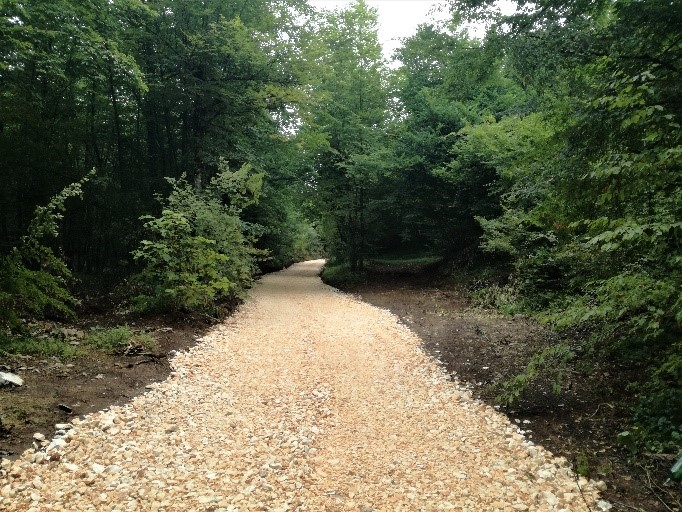
Thanks to its diverse geological ground and the expositions of the Šušnjara hill slopes, there are two types of colline forests present on these lowest parts of the Velebit Mountain range. There is the Sessile oak forest with Hornbeam and Beech trees which is more abundant in herbaceous plants and mushrooms, and on the southern slopes, we will find Turkey oak and Downy oak trees, as well as Manna ash and other plants growing in warmer habitats. More than 30 different species of forest birds live in the Kruškovac surrounding area thanks to its diverse forest habitats.
The diversity of the forest species also depends on the way forests are utilised and it is especially important to preserve the natural composition of trees of different ages. Since Velebit is part of the National Ecological Network and is also a European NATURA 2000 site, the Nature Park's management takes care of the preservation of the Šušnjara forest habitats, in cooperation with the responsible forestry department.
The forest is specific for its diverse microhabitats, ranging in layers from the canopy and understory, hollow trees, shrubs, herbaceous layer, forest edges and forest clearings to the forest floor with moss, leaf litter layer and root and the humus soil layer. In addition to the typical forest species which include various insect’s dependent on certain tree species, the forest also provides shelter for the animals which come deep into the grasslands in search of food. The daytime activities include Buzzards hunting the Common voles and the Goshawk preying on the fowl and Pheasants in the field, and when the night comes, it is the Hares, Roe deer, Wild boars and Red foxes who enter the grasslands.
Large animals from Velebit occasionally pass the forest and come to the village proximity. Brown bears visit the orchards in the autumn when the plums are ripe, and packs of Wolves come down to the valley more often during the winter.
Panel 5 - that's our pride
TRADITIONAL LIFESTYLE
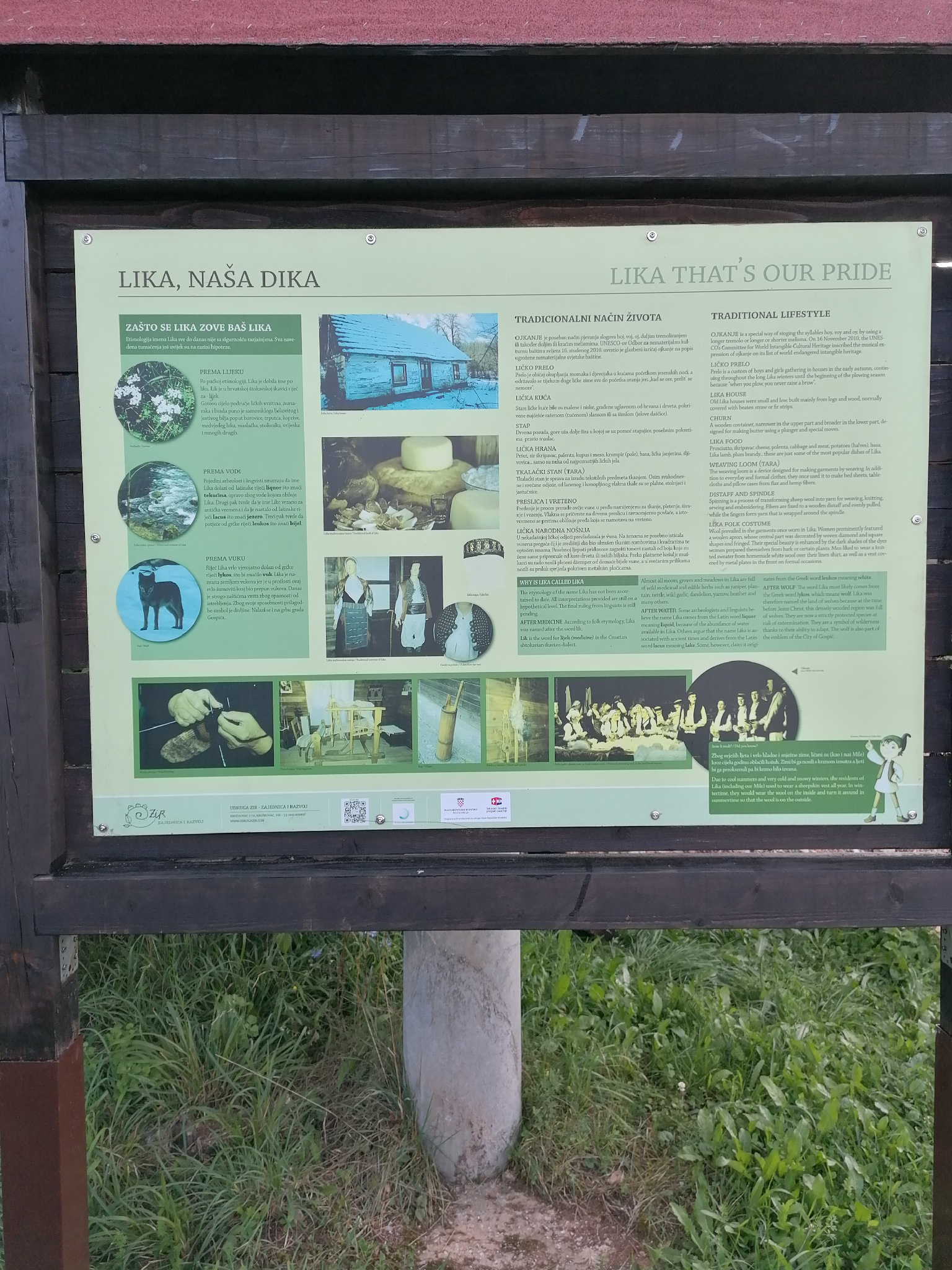
Ojkanje is a special way of singing the syllables hoy, voy and oy, by using a longer tremolo or longer or shorter melisma. On 16 November 2010, the UNESCO’s Committee for World Intangible Cultural Heritage inscribed the musical expression of ojkanje on its list of world endangered intangible heritage.
LIČKO PRELO
Prelo is a custom of boys and girls gathering in houses in the early autumn, continuing throughout the long Lika winters until the beginning of the plowing season because “when you plow, you never raise a brow”.
LIKA HOUSE
Old Lika houses were small and low, built mainly from logs and wood, normally covered with beaten straw or fir strips.
CHURN
A wooden container, narrower in the upper part and broader in the lower part, designed for making butter using a plunger and special moves.
LIKA FOOD
Prosciutto, škripavac cheese, polenta, cabbage and meat, potatoes (halves), basa, Lika lamb, plum brandy... these are just some of the most popular dishes of Lika.
WEAVING LOOM (TARA)
The weaving loom is a device designed for making garments by weaving. In addition to everyday and formal clothes, they once used it to make bed sheets, tablecloths and pillow cases from flax and hemp fibers.
DISTAFF AND SPINDLE
Spinning is a process of transforming sheep wool into yarn for weaving, knitting, sewing and embroidering. Fibers are fixed to a wooden distaff and evenly pulled, while the fingers form yarn that is wrapped around the spindle.
LIKA FOLK COSTUME
Wool prevailed in the garments once worn in Lika. Women prominently featured a woolen apron, whose central part was decorated by woven diamond and square shapes and fringed. Their special beauty is enhanced by the dark shades of the dyes women prepared themselves from bark or certain plants. Men liked to wear a knitted sweater from homemade white wool over their linen shirt, as well as a vest covered by metal plates in the front on formal occasions.
Panel 6 - the seat of the association ZIR - Community and Development
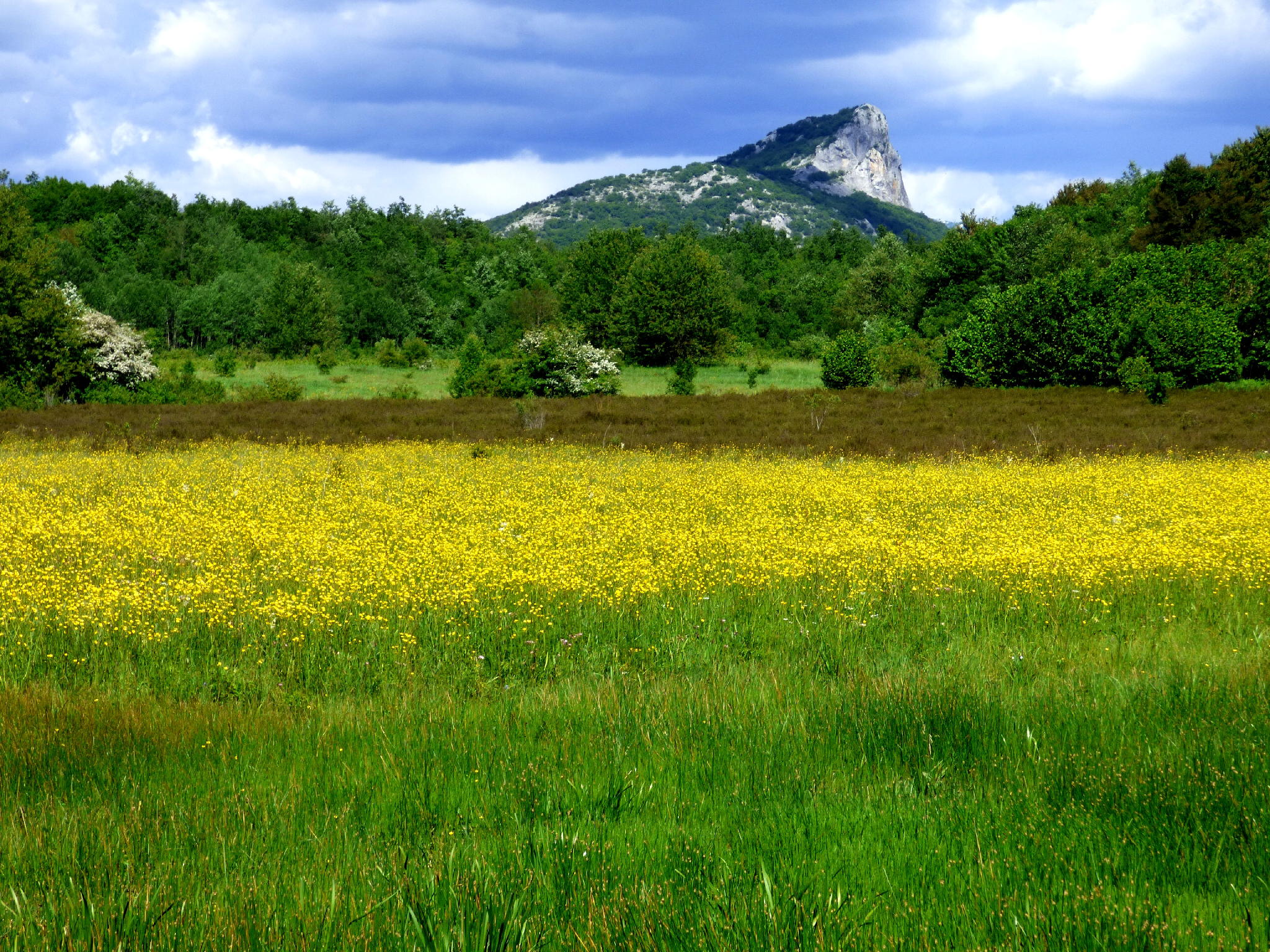
Panel 7 - Bees
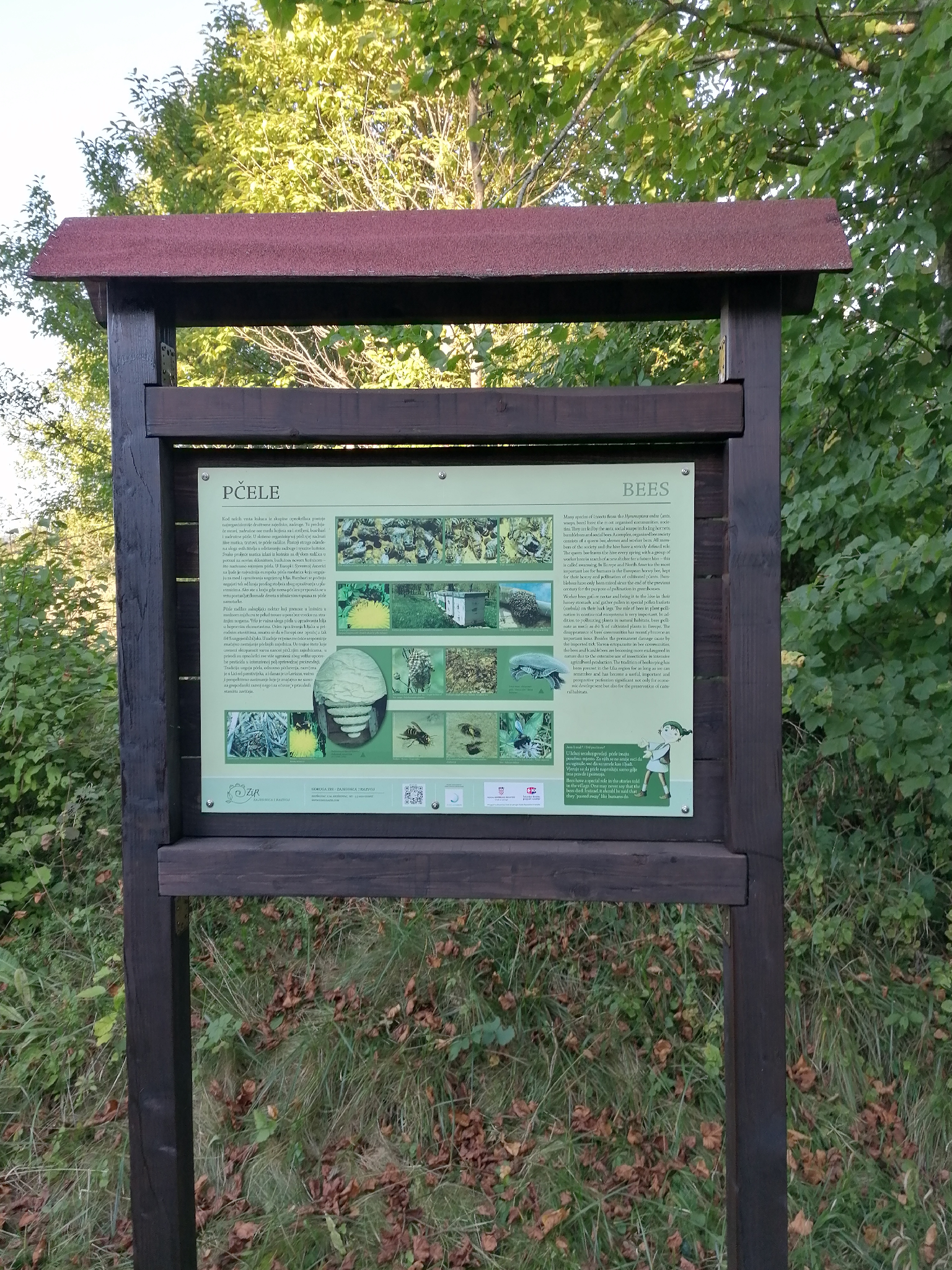
Many species of insects from the Hymenoptera order (ants, wasps, bees) have the most organised communities, societies. They are led by the ants, social wasps including hornets, bumblebees and social bees. A complex, organised bee society consists of a queen bee, drones and worker bees. All members of the society and the hive have a strictly defined role. The queen bee leaves the hive every spring with a group of worker bees in search of a new shelter for a future hive – this is called swarming. In Europe and North America, the most important bee for humans is the European honey bee, kept for their honey and pollination of cultivated plants. Bumblebees have only been raised since the end of the previous century for the purpose of pollination in greenhouses.
Worker bees gather nectar and bring it to the hive in their honey stomach, and gather pollen in special pollen baskets (corbula) on their back legs. The role of bees in plant pollination in continental ecosystems is very important. In addition to pollinating plants in natural habitats, bees pollinate as much as 84 % of cultivated plants in Europe. The disappearance of bees’ communities has recently become an important issue. Besides the permanent damage cause by the imported tick Varroa ectoparasite in bee communities, the bees and bumblebees are becoming more endangered in nature due to the extensive use of insecticides in intensive agricultural production. The tradition of beekeeping has been present in the Lika region for as long as we can remember and has become a useful, important and prospective profession significant not only for economic development but also for the preservation of natural habitats.
Panel 8 - Estavelle
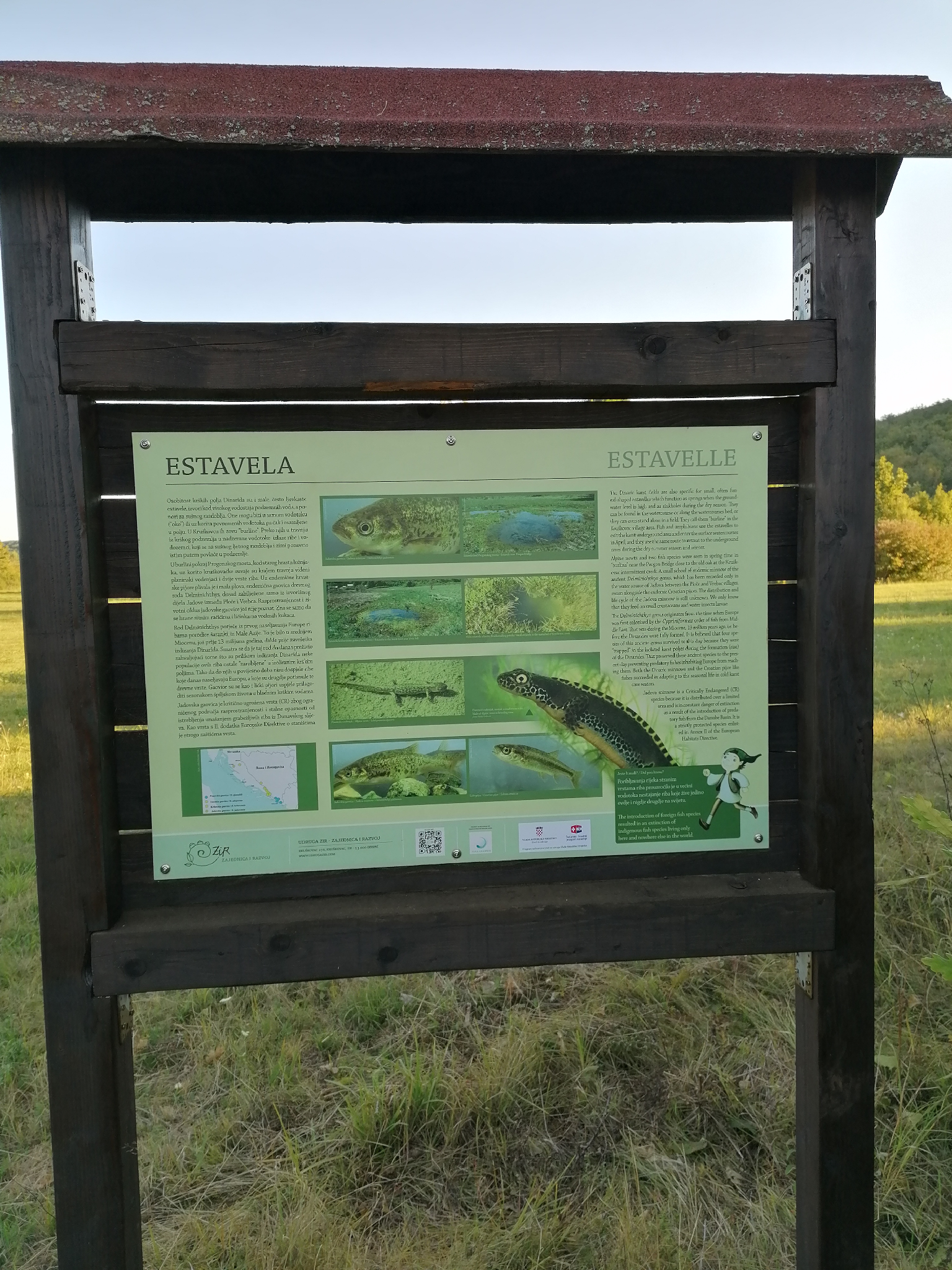
The Dinaric karst fields are also specific for small, often funnel-shaped estavelles which function as springs when the groundwater level is high and as sinkholes during the dry season. They can be found in the watercourse or along the watercourses bed, or they can even stand alone in a field. They call them "burline" in the Kruškovac village area. Fish and amphibians use the estavelles to exit the karst underground area and enter the surface watercourses in April, and they use the same route to retreat to the underground caves during the dry summer season and winter.
Alpine newts and two fish species were seen in spring time in "burlina" near the Progon Bridge close to the old oak at the Kruškovac intermittent creek. A small school of endemic minnow of the ancient Delminichthys genus, which has been recorded only in the water source of Jadova between the Ploče and Vrebac villages, swam alongside the endemic Croatian pijors. The distribution and life cycle of the Jadova minnow is still unknown. We only know that they feed on small crustaceans and water insects’ larvae.
The Delminichthys genus originates from the time when Europe was first colonized by the Cypriniformes order of fish from Middle East. That was during the Miocene, 13 million years ago, i.e. before the Dinarides were fully formed. It is believed that four species of this ancient genus survived to this day because they were "trapped" in the isolated karst poljes during the formation (rise) of the Dinarides. That preserved these ancient species to the present-day preventing predatory fishes inhabiting Europe from reaching them. Both the Dinaric minnows and the Croatian pijor like fishes succeeded in adapting to the seasonal life in cold karst cave waters.
Jadova minnow is a Critically Endangered (CR) species because it is distributed over a limited area and is in constant danger of extinction as a result of the introduction of predatory fish from the Danube Basin. It is a strictly protected species enlisted in Annex II of the European Habitats Directive.
Panel 9 - Buknjar and intermittent streams
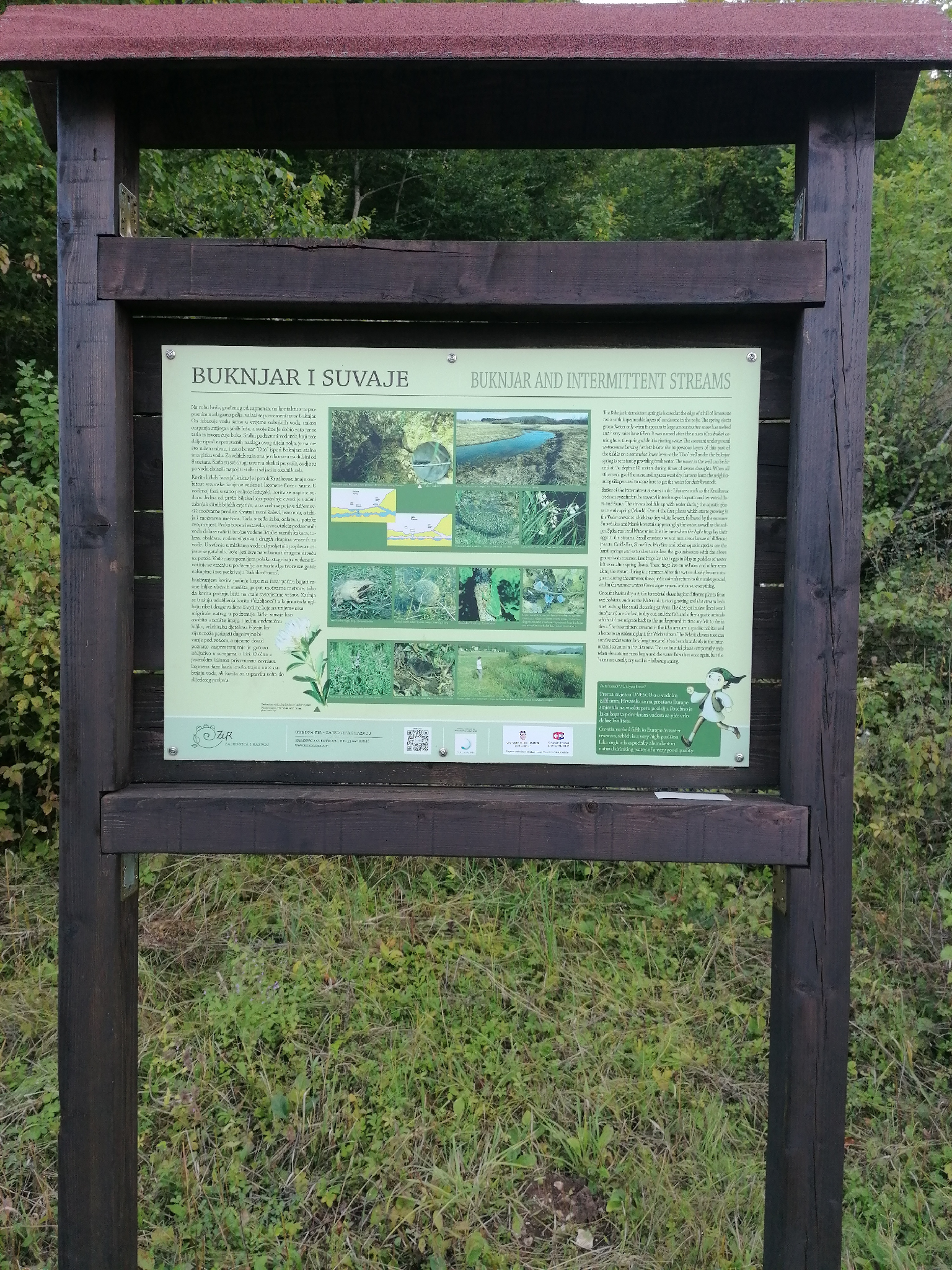
Buknjar spring
The Buknjar intermittent spring is located at the edge of a hill of limestone rocks with impermeable layers of sandstone in the polje. The spring ejects groundwater only when it appears in large amounts after snow has melted and heavy rains have fallen. It was named after the noises (Cro. buka) coming from the spring while it is ejecting water. The constant underground watercourse flowing further below the impervious layers of this part of the field is on a somewhat lower level so the "Oko" well under the Buknjar spring is constantly providing fresh water. The water in the well can be found at the depth of 8 meters during times of severe droughts. When all other springs of the surrounding area went dry, farmers from the neighbouring villages used to come here to get the water for their livestock.
Intermittent streams in the Lika area
Basins of the intermittent streams in the Lika area such as the Kruškovac creek are specific for the seasonal interchange of aquatic and terrestrial flora and fauna. The stream bed fills up with water during the aquatic phase in early spring (March). One of the first plants which starts growing is the Water crowfoot which has tiny white flowers, followed by the summer Snowflakes and Marsh horsetails appearing by the water, as well as the sedges, Spike-rush and Water mint. It is the time when the Agile frogs lay their eggs in the streams. Small crustaceans and numerous larvae of different insects, Caddisflies, Stoneflies, Mayflies and other aquatic species use the karst springs and estavelles to replace the groundwaters with the above ground watercourses. Tree frogs lay their eggs in May in puddles of water left over after spring floods. These frogs live on willows and other trees along the stream during the summer. After the waters slowly become stagnant during the summer, the aquatic animals return to the underground, and in the warmer waters Green algae expand and cover everything.
Once the basins dry out, the terrestrial phase begins: different plants from wet habitats, such as the Water mint, start growing and the stream beds start looking like small blooming gardens. The deepest basins (local word dubljanci) are the last to dry out, and the fish and other aquatic animals which did not migrate back to the underground in time are left to die in them. The intermittent streams in the Lika area are a specific habitat and a home to an endemic plant, the Velebit clover. The Velebit clovers root can survive under water for a long time, and it has been found only in the intermittent streams in the Lika area. The continental phase temporarily ends when the autumn rains begin and the water flow rises once again, but the basins are usually dry until the following spring.
Panel 10 - Zminjak
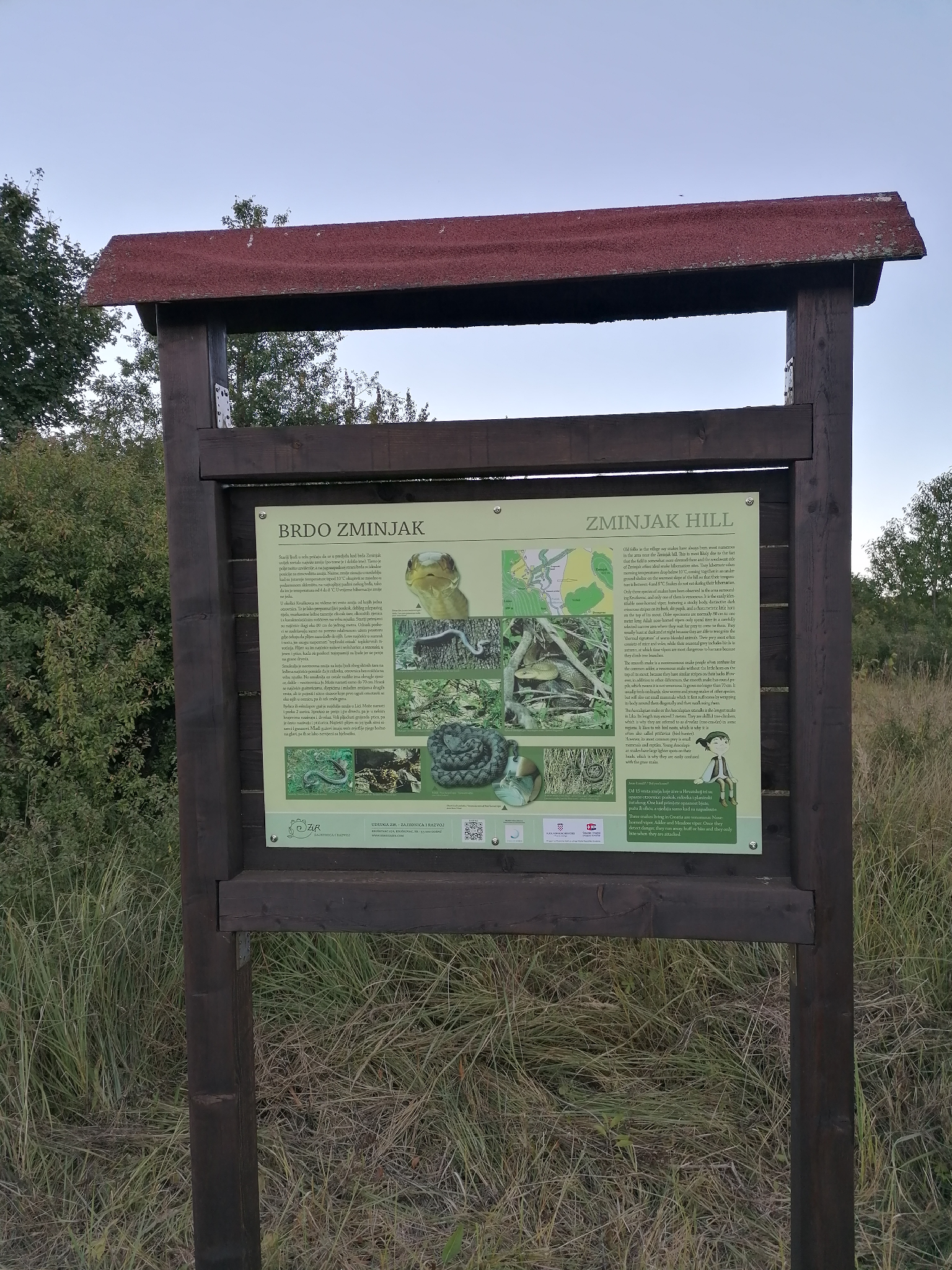
Old folks in the village say snakes have always been most numerous in the area near the Zminjak hill. This is most likely due to the fact that the field is somewhat more elevated there and the southwest side of Zminjak offers ideal snake hibernation sites. They hibernate when morning temperatures drop below 10 °C, coming together in an underground shelter on the warmest slope of the hill so that their temperature is between 4 and 8 °C. Snakes do not eat during their hibernation.
Only three species of snakes have been observed in the area surrounding Kruškovac, and only one of them is venomous. It is the easily identifiable Nose-horned viper, featuring a stocky body, distinctive dark crisscross stripes on its back, slit pupils, and a characteristic little horn on the top of its snout. Older specimens are normally 80 cm to one meter long. Adult Nose-horned vipers only spend time in a carefully selected narrow area where they wait for prey to come to them. They usually hunt at dusk and at night because they are able to recognize the “thermal signature” of warm-blooded animals. Their prey most often consists of mice and voles, while their seasonal prey includes birds in autumn, at which time vipers are most dangerous to humans because they climb tree branches.
The Smooth snake is a nonvenomous snake people often confuse for the Adder, a venomous snake without the little horn on the top of its snout, because they have similar stripes on their backs. However, in addition to other differences, the Smooth snake has round pupils, which means it is not venomous. It grows no longer than 70 cm. It usually feeds on lizards, slow worms and young snakes of other species, but will also eat small mammals which it first suffocates by wrapping its body around them diagonally and then swallowing them.
The Aesculapian snake or the Aesculapian ratsnake is the longest snake in Lika. Its length may exceed two meters. They are skillful tree-climbers, which is why they are referred to as drvolaz (tree-crawler) in some regions. It likes to rob bird nests, which is why it is often also called ptičarica (bird-hunter). However, its most common prey is small mammals and reptiles.
Panel 11 - Mt. Velebit
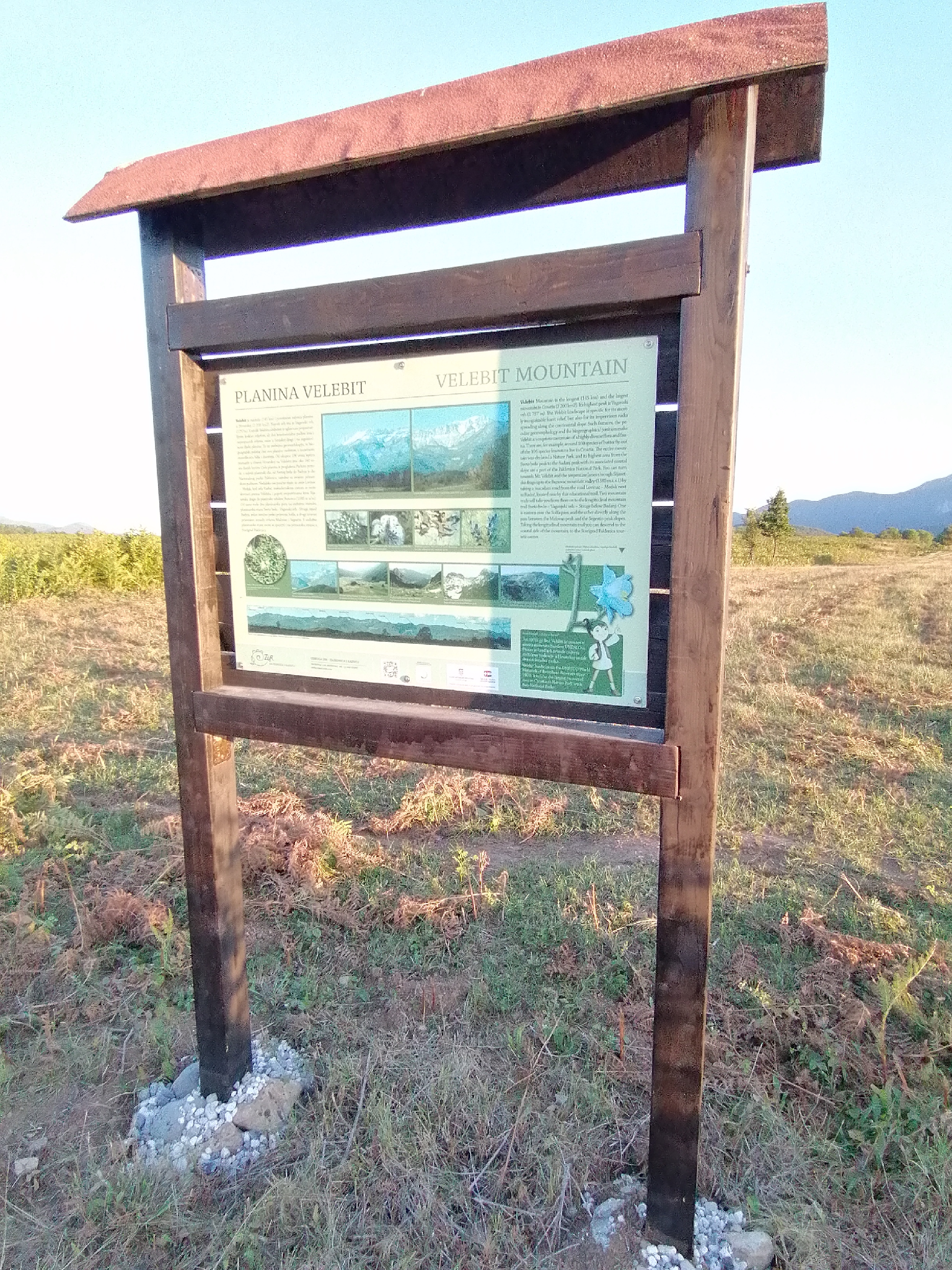
Velebit is the longest (145 km) and the largest mountain in Croatia (2 200 km2). It highest peak is Vaganski vrh (1 757 m). The Velebit landscape is specific for its mostly recognizable karst relief, but also for its impervious rocks spreading along the continental slope. Such features, the peculiar geomorphology and the biogeographical position make Velebit an exquisite mountain of a highly diverse flora and fauna. There are, for example, around 160 species of butterflies, out of the 196 species known to live in Croatia. The entire mountain was declared a nature park, and its highest area from the Sveto brdo peak to the Badanj peak with its associated coastal slope are a part of the Paklenica national park. You can turn towards Mt. Velebit and the serpentine lanes through Sijasetska draga up to the Bunovac mountain valley (1585 m above sea level) by taking a macadam road from the road Lovinac – Papuča next to Raduč located nearby this educational trail. Two mountain trails will take you from there on to the longitudinal mountain trail Sveto brdo – Vaganjski vrh – Struge below Badanj. One is east over the Solila pass, and the other directly along the pass between the Malovan peak and the Segestin peak. Taking the longitudinal mountain trail you can descend to the coastal side of the mountain, to the Starigrad Paklenica touristic center.
Panel 12 - Bujadnice / Heaths with Bracken fern
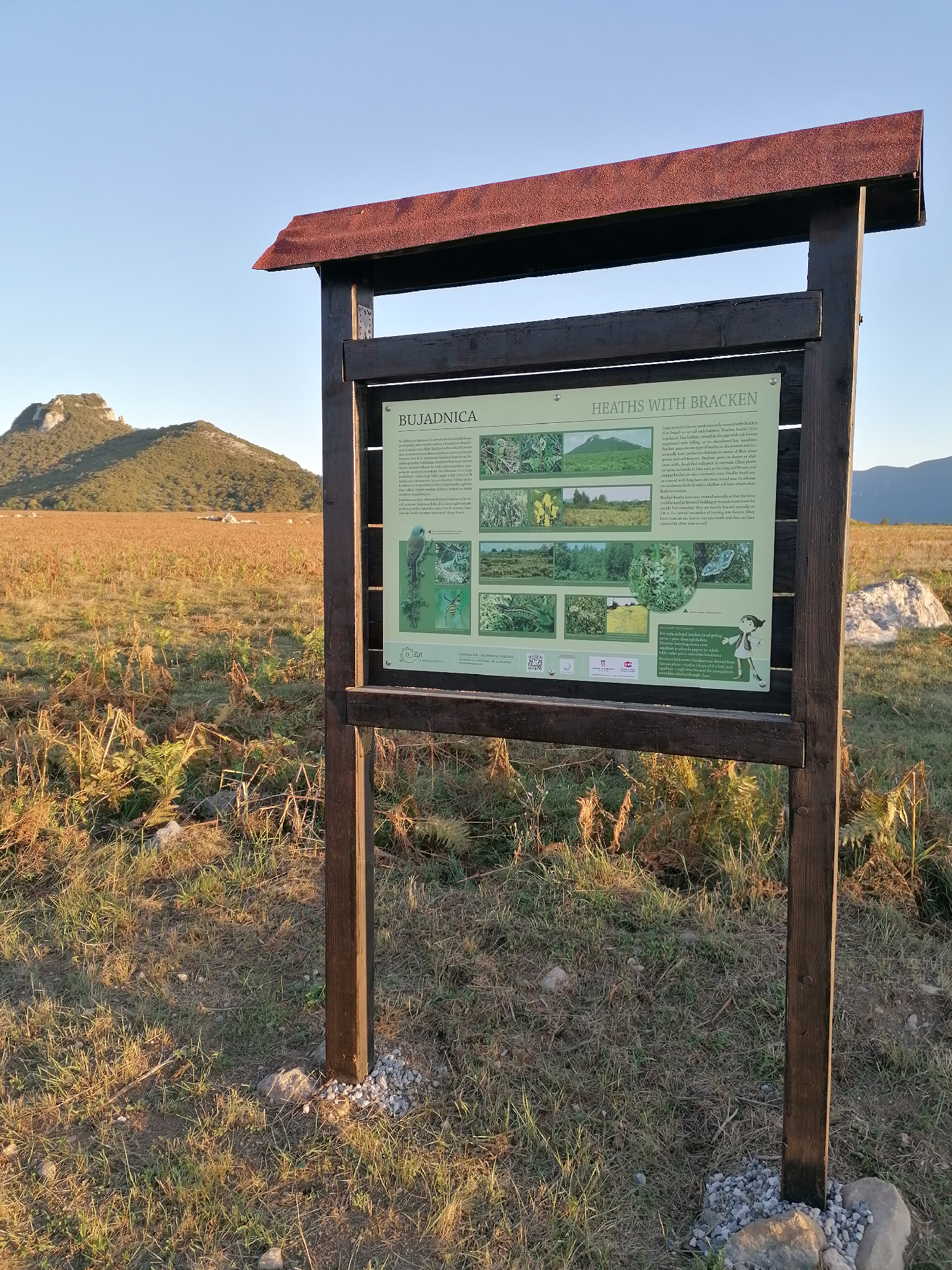
Large areas in Lika are predominantly covered with bracken ferns (Cro. bujad) so we call such habitats "Bracken fern heaths" (Cro. bujadnice). Bracken ferns grow on deeper or shallower acidic, decalcified soils poor in minerals, covered in the past with oak forests suppressed with felling, or on abandoned hay meadows. Bracken fern areas are one type of heaths, i.e. the poorest and economically least productive habitats in terms of their plant species and soil features. Other plants can grow on heaths in Lika, such as the ling and broom, and juniper bushes are also commonly seen. Smaller heath areas covered with ling have also been found near Kruškovac on sandstone bedrock with a shallow soil layer which often leads to erosions.
Bracken fern heaths were once mowed annually so that the ferns could be used as livestock bedding or to make mattresses for people, but nowadays they are mostly burned annually or left to the natural succession of turning into forests. Silver birch trees are the first to run into heath and they are later replaced by other trees as well.
Panel 13 - Hill Zir and Lika's karst field
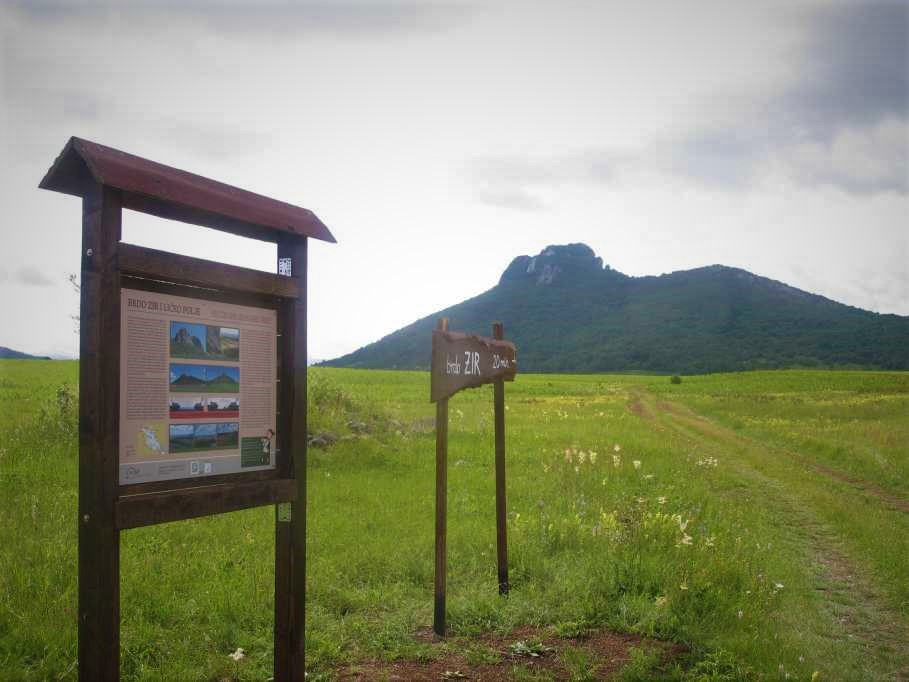
The Zir hill, with its peculiar rocky peak, is on the outermost southeast border of the Lika polje (565-600 m a.s.l.) and with a surface area of 465 km² is the largest karst field in Croatia. The ground of the polje is mostly made of impermeable rocky deposits originating from the surrounding mountains, Velebit and Lika Sredogorje (southern lesser hills of the Mala Kapela Mountain). The border with Gračac polje, which is situated to the south, is difficult to notice. It is at a virtual line connecting the Gornja Ploča settlement and the Raduč settlement (on the Velebit side) where the watershed is between the Lika River sources and the streams that discharges trough Gračac polje to the Zrmanja River. The Lika River, with its 78 km of river bed, is the Croatia’s largest subterranean river.
Thanks to its isolated position inside heaths and grasslands, from the peak of Zir is a mesmerising view overlooking the Lika polje and all of the Velebit Mountain chain. In the past, an old Roman road extended along the northern side of Zir originating from Senia (Senj), Epidotum (Kvarte) and Ancus (Vrebac) heading to the southeast. Remains of Roman roads from sea side to Lika polje were also found in the Baške Oštarije pass and Mali Alan pass. In the time of the Turkish invasions, an observation post was placed on Zir to control the main trade routes. The first new road along the foot of the Velebit Mountain in Lika polje was built in 1797. The A1 highway branches off near Zir across Lika Sredogorje with an express-road to Udbina via Krbavsko polje to Plitvice Lakes and forward to the north. Zir is inside a Natura 2000 area, and is an important site mostly for birds.



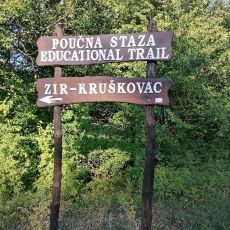
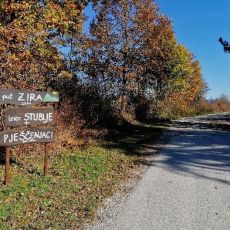
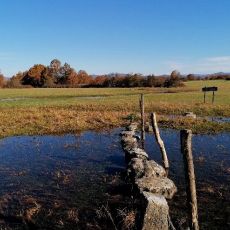
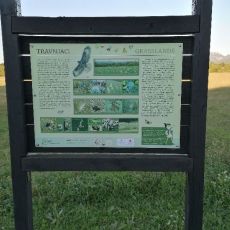
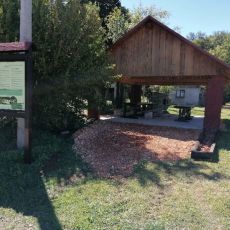

_330_250_80_s_c1.jpg)
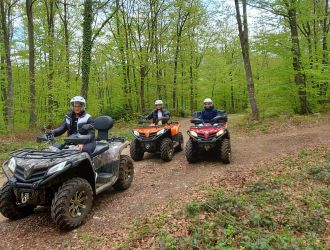
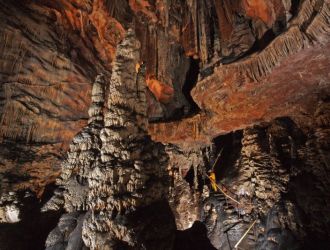
_330_250_80_s_c1.jpg)
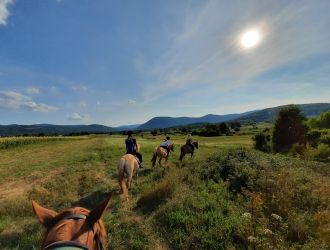
_330_250_80_s_c1.jpg)
_330_250_80_s_c1.jpg)
_330_250_80_s_c1.jpg)
_330_250_80_s_c1.jpg)
_330_250_80_s_c1.jpg)
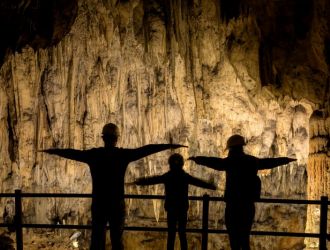
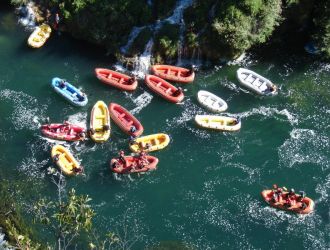
_330_250_80_s_c1.jpg)
